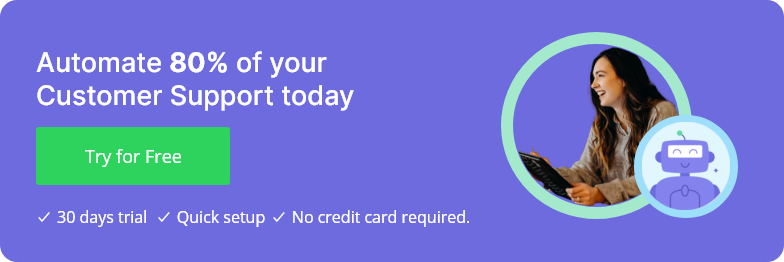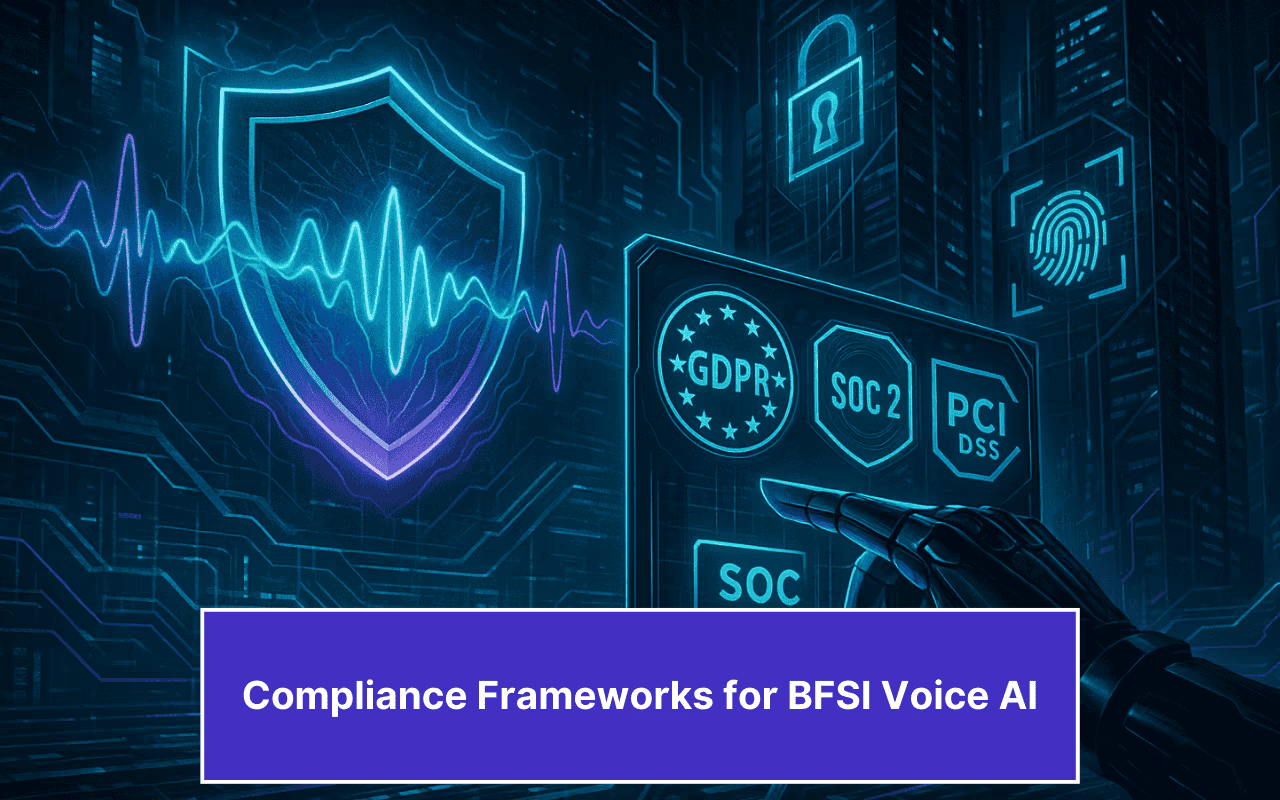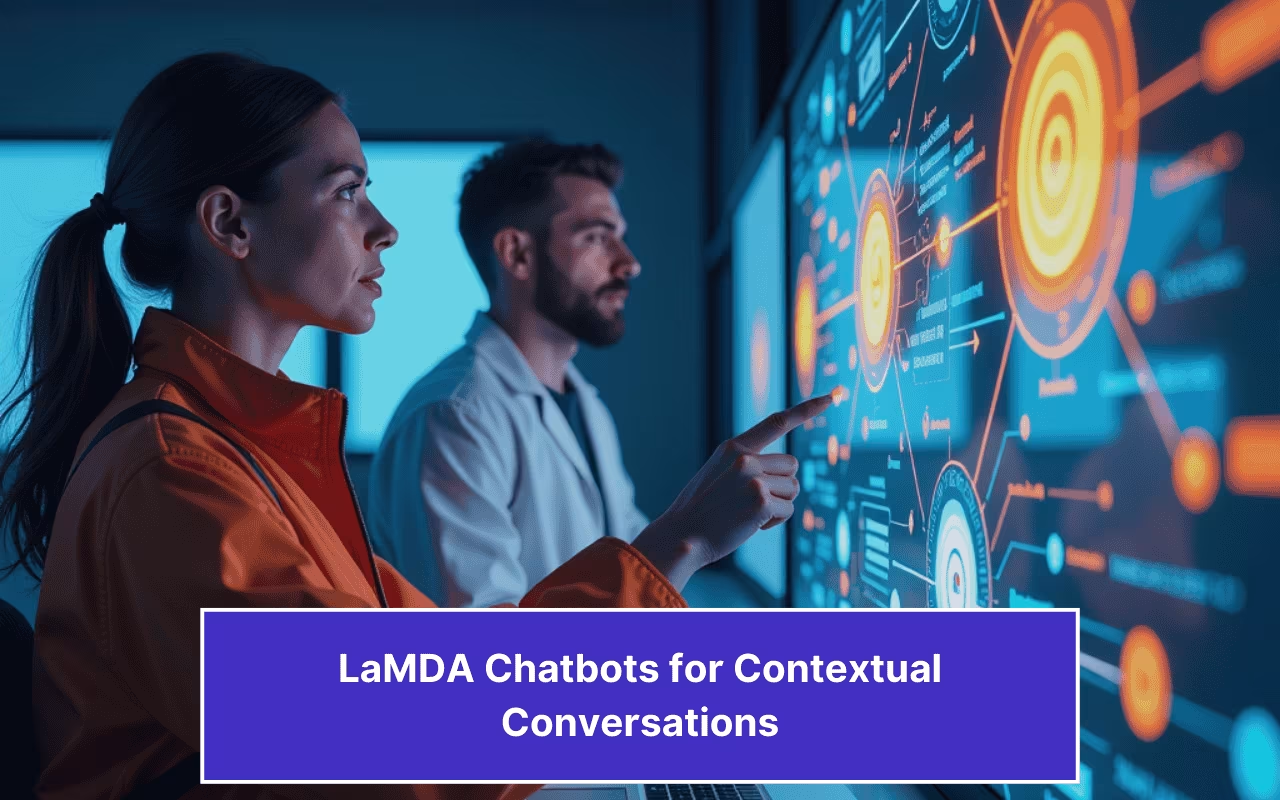Updated on June 4, 2025
Remember JARVIS from Iron Man? An AI-powered chatbot that not only answers questions but makes intelligent decisions based on what might be best for you. In JARVIS’s case, whatever is good for Tony!
But is that what we have today? Are we anywhere close to what JARVIS can do?
I’ll answer these questions and define chatbots in their current form. Most importantly, I’ll show you how to use chatbots for business growth and revenue generation.
With the global chatbot market expected to reach $27.3 billion by 2030, understanding chatbots isn’t just helpful, it’s essential for modern businesses.
For us to understand what a chatbot is or isn’t, we need to first learn how to define it.
What is a Chatbot?
A little googling would give you the following definition:
A chatbot is a computer program that simulates human conversation through text or voice interactions.
Going by this Alexa, Google Home and Siri are all chatbots and use either voice or text to communicate.
Though this definition is technically correct, in popular culture, the following is more prevalent (from Wikipedia)
A chatbot (also known as a chatterbot, bot, IM bot, interactive agent, or Artificial Conversational Entity) is a computer program or artificial intelligence that conducts conversations via auditory or textual methods.
Did you notice “Artificial Intelligence“?
Don’t worry, you’re not the only one! Most people are obsessed with that term. Considering how cool JARVIS is, it’s no surprise.
But current chatbots, as they stand now, are not fully artificially intelligent or capable of it, yet!
Before we can go further debunking that myth, we need to understand:
- How do chatbots work
- Where do chatbots come from
- What types exist today
How Do Chatbots Work? (Technical Explanation)
Chatbots, at least all the usable versions, use something called NLP (Natural Language Processing).
Not to be confused with Neuro-linguistic Programming, NLP deals with analysis and processing of natural language.
A chatbot, whose main objective is to simulate conversation like its human creators, needs to process and understand common language.
The Chatbot Processing Flow:
1. Input Reception: Record a user statement
2. Language Processing: Identify keywords and intent
3. Pattern Matching: Find answers from predefined responses
4. Response Generation: Reply with matched predefined answers
5. Learning (for AI bots): Improve responses based on interactions
Some advanced chatbots use NLP to process and simulate conversations. However, NLP itself isn’t fully developed—chatbots can answer specific queries and build conversations, but they’re not yet truly intelligent or fully capable of understanding natural language.
NLP is complex and progress is gradual. It will take time before NLP truly understands everything we say.
Consequently, chatbots haven’t reached a state where they can understand human conversation perfectly and respond flawlessly.
Most chatbots today can only answer predefined questions, though advanced ones learn from interactions.
What This Means—Common Misconceptions
This means chatbots aren’t as smart as you might think.
Chatbots are not JARVIS yet!
Current technology isn’t capable of human-level conversation, though that remains the end goal.
Another misconception: chatbots only work through chat windows. Actually,
chatbots are anything that simulates conversation with humans.
Google Assistant and Amazon Alexa are chatbots that use voice for conversation.
Based on current capabilities, let’s redefine a chatbot:
A chatbot is a program that follows rules and sometimes AI to interact with users through text or voice, simulating human conversation patterns.
Though we assume chatbots have AI, it’s not always true. This brings us to different chatbot types.
Types of Chatbots
There are two main types of chatbots based on their operation:
- Rule-Based Chatbots (Sequential/Linear)
- AI-Powered Chatbots (Machine Learning)
Rule-Based Chatbots (Sequential/Linear)
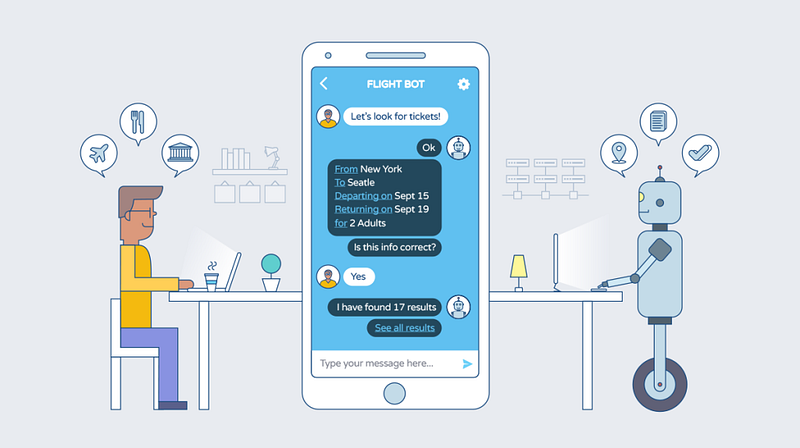
Also called sequential, rule-based, or Q&A chatbots. The concept is simple and widely used—questions and answers are predefined. When users ask something, the bot matches keywords with available predefined responses.
How Rule-Based Chatbots Work:
- Follow decision trees and flowcharts
- Match user input to predefined responses
- Limited to programmed scenarios
- Fast, reliable responses for common queries
- No learning capability
Best for: FAQ handling, simple customer service, lead qualification
AI-Powered Chatbots (Machine Learning)
These chatbots use NLP and machine learning. Like rule-based bots, they need predefined questions, answers, and keywords (called intents).
This initial data becomes the “Learning Set”, the chatbot uses it to answer initial questions and learns from responses to eventually answer queries more accurately.
How AI Chatbots Work:
- Use natural language processing
- Learn from conversation patterns
- Improve responses over time
- Handle complex, contextual conversations
- Require training data and ongoing optimization
Best for: Complex customer support, personalized recommendations, advanced lead nurturing
Chatbot Comparison Table
| Feature | Rule-Based | AI-Based |
| Setup Complexity | Low | High |
| Cost | Lower | Higher |
| Maintenance | Manual Updates | Self-improving |
| Conversation Quality | Limited | Natural |
| Best Use Case | Simple FAQs | Complex interactions |
How to Use Chatbots for Business?
Though chatbots represent the future, they may never fully replace human intelligence, not unless true AI (Artificial General Intelligence) emerges.
However, chatbots excel at repetitive tasks that don’t require emotional intelligence or complex decision-making.
Research shows businesses using chatbots see:
- 30% reduction in customer service costs
- 50% increase in lead generation
- 24/7 availability leading to 35% higher customer satisfaction
Customer Support Automation
If you’ve worked in customer support, you know that over 30% of queries involve information already available on your website, FAQ pages or support documents.
Most queries require no action beyond sharing predefined answers and links.
How FAQ Chatbots Help:
- Connect customer queries to FAQs and support docs
- Share answers from predefined knowledge base
- Free support teams for complex issues
- Offer escalation to human agents when needed
- Reduce response time from hours to seconds
Result: Support teams can focus on revenue-generating activities while FAQ chatbot handles routine inquiries.
Bonus: Check out our homegrown FAQ chatbot and implementation strategies
Lead Generation and Qualification
One challenge in marketing is the low visitor-to-qualified-lead conversion ratio on most websites.
Chatbots tackle this problem effectively. Companies like Kommunicate, and others have built successful businesses around this approach.
Lead Generation Process:
- Replace live chat with intelligent chatbot
- Bot asks contextual questions based on page visitor is viewing
- Qualifies leads through automated questioning
- Schedules demos or connects with sales team
- Captures contact information for follow-up
Example Implementation: If a real estate company like Sobha Developers implemented a chatbot:

The bot would ask different questions depending on the visitor’s location:
- Pricing page visitors: “Would you like me to explain our current pricing plans and available units?”
- Project page visitors: “Are you interested in scheduling a site visit for this project?”
- Home page visitors: “What type of property are you looking for? I can show you our best matches.”
Results: Chatbots add up to 30% more qualified leads to your sales funnel and can complete entire sales cycles for simpler transactions.

Customer Engagement and Retention
One powerful chatbot feature is real-time triggering based on visitor behavior and current situation.
This resembles event-based email marketing but happens in real-time while customers browse your website.
Engagement Strategies:
- Exit-intent detection: Offer help when users show leaving behavior
- Time-based triggers: Engage users who spend extended time on specific pages
- Behavior-based responses: Different messaging for returning vs. new visitors
- Personalized recommendations: Suggest relevant products/services based on browsing history
This approach works especially well when customers reach the decision-making stage and need encouragement to contact sales or request demos.
Social Media Integration: Combine chatbots with platforms like Facebook Messenger for:
- 80% open rates
- 40% click-through rates
- Direct newsletter delivery through chat
Here’s an example Facebook Messenger marketing message:
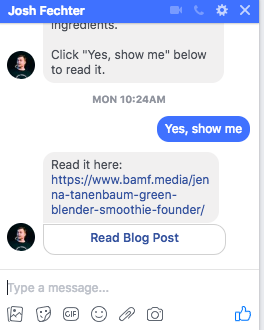
Chat-based conversations simply work better than traditional email marketing!
Team Collaboration and Internal Operations
Communication tools are crucial for collaboration and task automation. Most companies use team chat tools like Slack or Microsoft Teams.
Internal Chatbot Applications:
Automated Status Updates:
- Gather daily updates from team members
- Compile reports for managers
- Send automated reminders for missed updates
Internal Notifications:
- Remind sales teams about scheduled demos
- Send deadline alerts to project teams
- Notify teams about important company updates
Internal Knowledge Base:
- HR policy questions and answers
- IT support for common technical issues
- Compliance and regulation guidance
- Company procedure lookups
Benefits for Internal Teams:
- Reduce time spent on routine questions
- Ensure consistent information sharing
- Improve compliance with company policies
- Free up HR and IT teams for strategic work
E-Commerce and Sales Optimization
Abandoned Cart Recovery: Abandoned cart scenarios occur when customers add products but don’t complete purchases.
How Chatbots Help:
- Identify returning users who abandoned carts
- Offer assistance completing transactions
- Provide incentives (discounts, free shipping)
- Answer product questions that might prevent purchase
- Trigger urgency messaging for limited-time offers
Upselling Opportunities:
- Recommend complementary products
- Suggest upgrades based on customer needs
- Provide personalized product recommendations
- Offer bundle deals at checkout
Results: Chatbot-based approaches show 40% better results than email or push notifications for cart recovery.

How to Build a Chatbot?
Building a chatbot today is easier than ever, thanks to a wide range of no-code and developer-friendly platforms. Your approach depends on the type of chatbot you want to create, whether it’s a simple rule-based chatbot or a more advanced, AI-powered assistant.
Step 1: Choose the Right Platform
- Kommunicate – A powerful chatbot platform that allows you to create AI-powered chatbots, manage human handoffs, and integrate seamlessly with your website or app for a smooth customer support experience.
- Dialogflow – Google’s conversational AI platform that lets you build intent-based chatbots with natural language understanding. Ideal for scalable and multilingual bots.
- Microsoft Bot Framework – A robust option for building enterprise-grade bots with deep customization.
- Amazon Lex – Backed by AWS, this platform helps you create sophisticated voice and text chatbots using the same technology as Alexa.
- Rasa – An open-source framework for developers who want full control over chatbot logic, privacy, and deployment.
Step 2: Train with Intents and Responses
If you’re aiming for an AI-powered chatbot, you’ll need to define intents (what the user wants) and responses. Platforms like Dialogflow and Lex make it easy to manually add intents and train the chatbot using example phrases.
Step 3: Publish and Integrate
Once your bot is ready, you’ll need a platform to deploy it across your website, mobile app, or messaging channels. This is where platforms like Kommunicate come in—helping you integrate your chatbot, manage human handoffs, and track performance.
ite or App. You can always build your own publishing unit, a better way would be to build the chatbot in any of the above chatbot platforms and integrate it with something like Kommunicate.

Conclusion
Chatbots represent the next evolution in customer communication, and most businesses are just beginning to understand their importance and potential.
We must recognize that current chatbots require human intervention for complex cases. While true AI chatbots are still in development, we can effectively use today’s sequential and intent-based chatbots.
Key Takeaways:
- Chatbots excel at repetitive, rule-based tasks
- They significantly improve response times and availability
- ROI is measurable and typically positive within months
- Implementation should start simple and scale gradually
- Human oversight remains essential for complex scenarios
Investment in chatbots adds long-term value for both businesses and customers.

CEO & Co-Founder of Kommunicate, with 15+ years of experience in building exceptional AI and chat-based products. Believes the future is human + bot working together and complementing each other.

